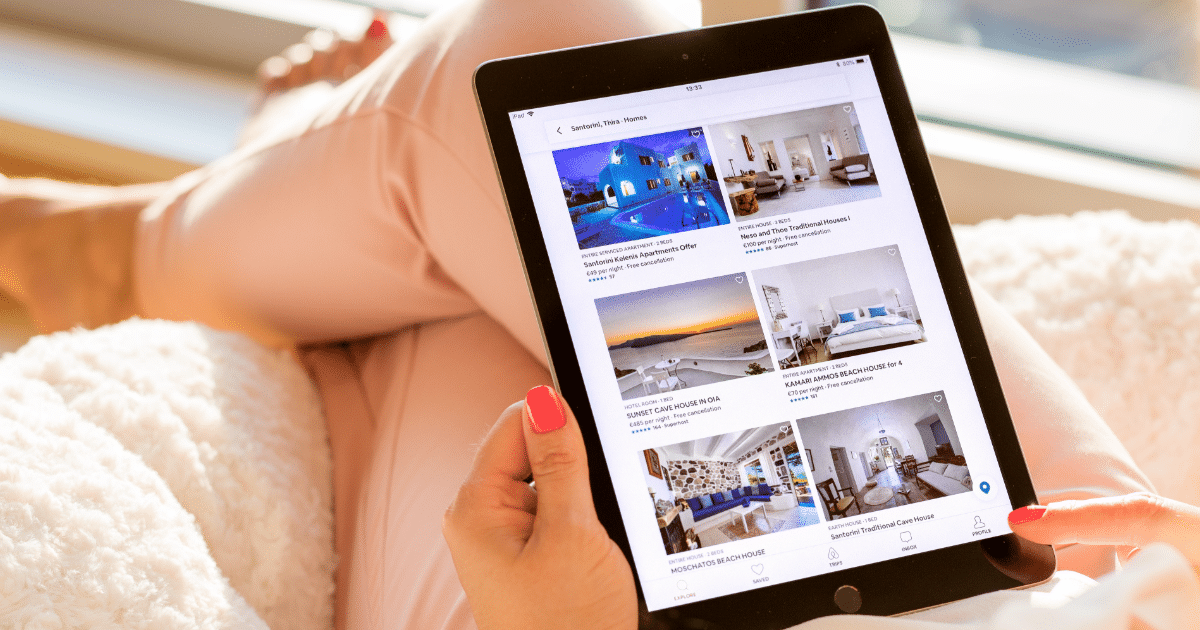
Simply blasting an ad on a webpage won’t cut it. Your ad needs to do more than just appear, it must capture attention, spark interest, and ultimately motivate action. But how do you do that when your audience is already overwhelmed by information at every click?
The answer lies in psychology; simple display ad design psychology. If you’re not tapping into consumer behavior and psychological triggers, you’re missing out on the most powerful tool for crafting ads that not only stand out but compel decision-makers to take action. Understanding the science behind color psychology, emotional appeal, and user behavior, at this point, should be a cornerstone of every marketing strategy. And it’s the key to building relevant, engaging ads that make an impact.
When you can harness these psychological principles, you’re not just pushing a product. You’re connecting with your audience, guiding their thought process, and nudging them toward making a decision.
In this article, we’ll dive deep into the core psychological principles behind compelling display ads, break down the key components that make them irresistible, and show you how to design ads that don’t just capture attention but keep your audience engaged long enough to take action. By combining the art of design with the science of psychology, you’ll unlock the power to create ads that resonate with your B2B audience, drive measurable results, and elevate your ROI.
How to Design a Display Ad for B2B Decision-Makers
Designing an effective display ad for B2B decision-makers goes beyond aesthetics. While bold visuals are important, it’s psychology that drives the success of an ad. B2B buyers, unlike consumers in other industries, are primarily driven by logic, but they are still human beings influenced by emotions.
To create a highly effective B2B display ad, consider the following psychological principles:
- Appeal to Their Business Goals: B2B decision-makers are looking for solutions that align with their pain points and business objectives. Focus on what results your product or service will bring them—whether it’s improved efficiency, cost savings, or growth opportunities. Use data-backed insights to personalize messaging and speak directly to their strategic needs.
- Trust and Authority: Use social proof and credibility markers. Including testimonials, case studies, or partner logos builds trust, especially for decision-makers who are hesitant to make risky decisions. In B2B, trust can be the deciding factor, and your ad design should reflect that.
- Simplicity is Key: Decision fatigue is real. Overloading a display ad with information is a surefire way to lose the prospect’s attention. Keep your message clear and concise. Prioritize your ad’s message to communicate one central idea with a powerful CTA.
- Urgency: Use subtle psychological triggers like scarcity or FOMO (fear of missing out). Phrases like “Limited-Time Offer” or “Only a Few Spots Left” can drive immediate action without coming off as pushy.
What are the 4 Parts of a Display Ad?
There’s a structure to a responsive display ad that plays a critical role in capturing attention and driving action. Understanding these parts, and how they interact psychologically, is the key to designing ads that convert.
Here are the four essential components of a display ad and how each plays its role:
- Headline: The headline is the first thing your audience reads, and it must immediately capture attention. A good headline addresses the viewer’s pain point or presents a solution, sparking curiosity and enticing them to read more. Using action verbs (e.g., “Unlock,” “Discover,” “Transform”) triggers engagement. Headlines should be short, direct, and benefit-oriented.
- Visuals: The images or graphics used in a display ad serve as the emotional hook. Humans process visual content 60,000 times faster than text, so your visuals should resonate emotionally. Use images that align with the brand and speak to the buyer’s needs. Avoid generic stock photos; instead, use visuals that portray real-world scenarios or specific products to highlight relevance. (READ: Keeping Your Display Ads Fresh and Engaging)
- Call-to-Action (CTA): The CTA is where the magic happens, it’s the action trigger. A well-designed CTA should stand out but also feel like a natural extension of the ad. Use strong, urgent action words like “Get Started Today,” “Claim Your Spot,” or “Start Your Free Trial.” By adding phrases like “Limited Time Offer” or “Try Now, Pay Later”, you can amplify urgency and motivate quick decisions.
- Branding: Branding ensures your ad connects with trustworthiness and familiarity. It’s not just about placing your logo in the corner, your brand’s colors, fonts, and overall aesthetic should be consistent with the rest of your marketing materials. This visual consistency makes it easier for prospects to recognize your brand and increases brand recall. In fact, display ads with strong branding have been shown to increase ad effectiveness by over 50%.
How to Write a Display Ad
Writing for display ads requires a blend of psychological understanding and persuasive language. As B2B marketers, you need to speak the language of your audience while addressing their immediate needs.
Here’s how to write a responsive display ad that connects:
- Benefit-Focused Language: Instead of focusing on features, frame your copy around how your product solves problems or addresses pain points. Use phrases like “Save 20% on costs” or “Improve team efficiency by 30%.”
- Action-Oriented Words: The most effective CTAs use imperative verbs like “Download,” “Discover,” “Get,” or “Start.” These words trigger action and tell the user exactly what to do next.
- Urgency and Exclusivity: Words like “limited,” “exclusive,” or “for a limited time” encourage the user to act before they miss out. This taps into the scarcity principle, a well-documented psychological motivator.
What Colors to Use in Display Ads?
Color isn’t just about aesthetic appeal; it’s a powerful psychological tool that can influence how decision-makers engage with your display ads. Understanding the psychology behind color choices can help you with display ad design ideas that not only catch the eye but also drive action.
Here’s a quick guide to colors and their psychological impact, backed by research, to help you design ads that boost conversions:
- Blue: Often associated with trust, reliability, and professionalism, blue is a staple in B2B marketing. It’s calming and soothing, making it ideal for corporate or financial services ads.
- Red: Red is bold and energetic, evoking a sense of urgency and excitement. It’s excellent for driving immediate action in time-sensitive ads. Red has been shown to increase conversion rates by creating urgency. Think “limited-time offer” in your CTA. Research suggests that ads using red have higher click-through rates (CTR) due to its attention-grabbing quality.
- Green: Symbolizing growth, wealth, and stability, green is often used in industries related to finance, healthcare, and sustainability. Green ads can make viewers feel safe and assured in their purchasing decisions as it is considered a soothing color.
- Orange: Known for being energetic and friendly, orange is great for making ads feel approachable without overwhelming the viewer. It conveys a sense of enthusiasm and is often used in call-to-action buttons.
- Black: Associated with luxury, elegance, and sophistication, black is ideal for high-end B2B services or products. It communicates power and authority, making it an excellent color choice for ads promoting premium products or services. Studies have shown that using black in ads can evoke a sense of exclusivity, appealing to decision-makers looking for high-quality solutions.
- Yellow: While it’s an attention-grabbing color, yellow is best used sparingly. It’s associated with optimism and creativity, making it a great choice for brands aiming to convey innovation and positivity. However, too much yellow can cause visual fatigue, so it’s often used to highlight key elements or calls-to-action (CTAs).
How to Design a Display Advertisement for Success
When it comes to designing display ads for B2B, it’s important to go beyond aesthetics and focus on consumer behavior. Good design doesn’t just look pretty, it bypasses even ad blocking triggers and drives action
To create successful display ads, you need to understand how your target audience engages with content and design your ads to facilitate their decision-making process.
- Understand the Buyer’s Journey: Your design should cater to where your audience is in their journey. Top-of-funnel (TOFU) ads should focus on building awareness with clear and bold visuals, while bottom-of-funnel (BOFU) ads should be more conversion-oriented, with direct CTAs and product-focused content.
- Keep It Simple: The most effective ads don’t overwhelm the viewer with information. Instead, focus on one clear message that captures their attention and guides them toward action. Use negative space to allow the message to stand out and avoid clutter.
- Be Adaptive: The beauty of responsive display ads is that they automatically adapt to different screen sizes and formats. However, it’s important to make sure your ad looks good across all devices, whether it’s a desktop, tablet, or mobile. Don’t just rely on mobile-first designs; ensure your ad’s key message and CTA remain visible and actionable across every platform.
Take Monday.com, for example. Their ads aren’t just eye-catching, they speak directly to decision-makers by addressing their pain points in a personalized and emotionally relevant way. By highlighting how their project management platform simplifies team collaboration, Monday.com taps into the audience’s needs for efficiency, clarity, and organization, creating a deeper connection through targeted messaging and simple design.
Or look at Netflix; their call-to-action isn’t just about showcasing their streaming service, it’s about creating a sense of exclusivity and urgency with phrases like “Try the First Month Free.” Netflix uses psychological triggers like FOMO (fear of missing out), making prospects feel like they’re missing out on the latest must-watch series unless they act now. This kind of messaging, paired with responsive display ads, ensures their content reaches users at the right moment, regardless of the device they’re using.
When you can harness these psychological principles, you’re not just pushing a product. You’re connecting with your audience, guiding their thought process, and nudging them toward making a decision.
Conclusion: Designing for Behavior, Not Just Aesthetics
Designing effective display ads is not just about creating something that looks visually appealing. It’s about understanding the psychology of decision-makers and creating ads that speak to their needs and guide them through their journey. By blending psychological principles with responsive design, you can create ads that don’t just attract attention but engage and convert prospects.
When you design for behavior, by considering the decision-making process, urgency, personalization, and a seamless user experience, you don’t just create an ad. You create a relationship-building tool that speaks to your audience’s motivations and moves them from awareness to action. The result? Ads that work, not just in theory, but in practice.
Bring your display ad campaigns to the next level.
Supercharge your B2B marketing strategies today.










